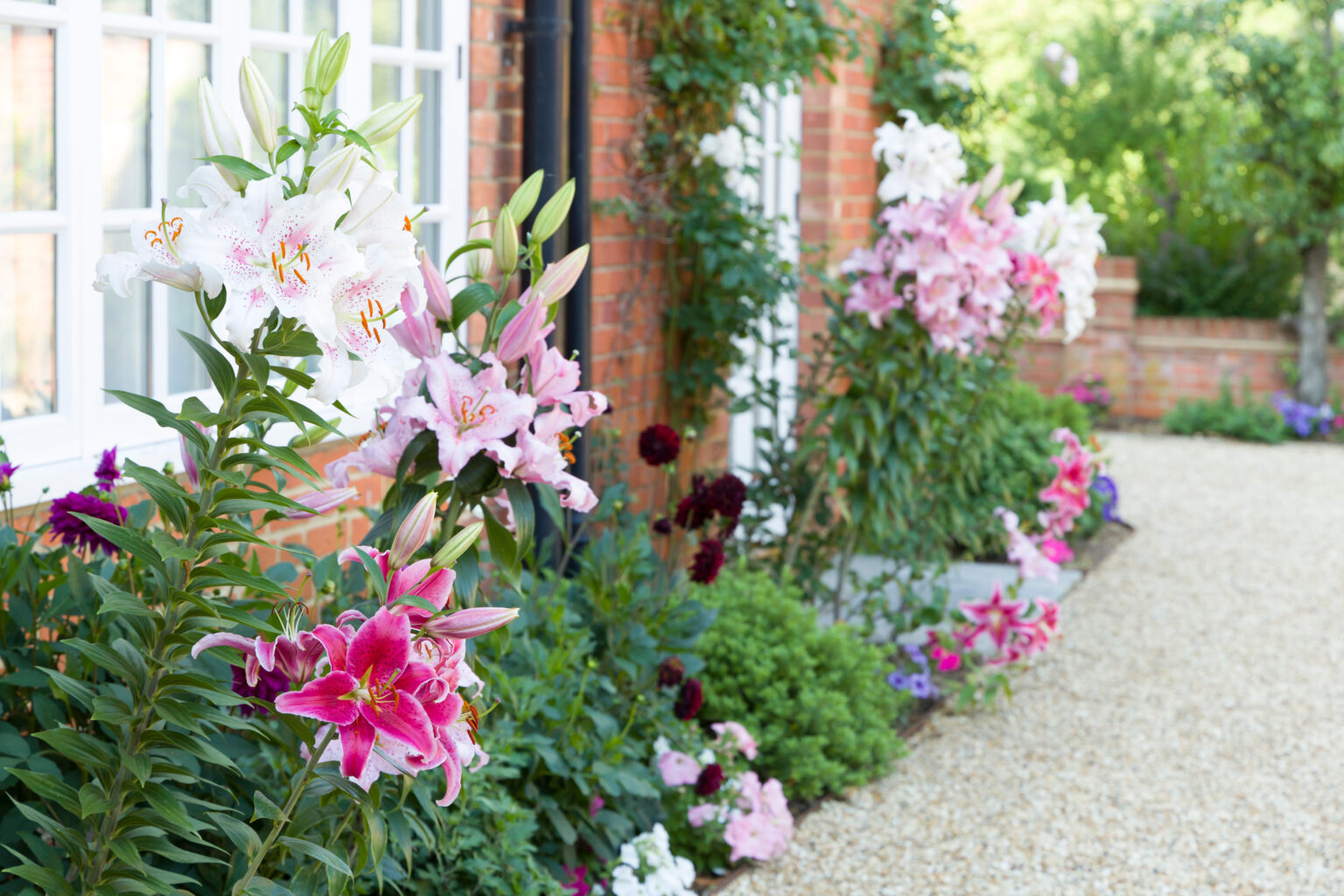If you’re looking to add some elegance and fragrance to your garden this late spring and summer, lilies are a classic option worth considering. These perennial plants, which start off as bulbs, are often gifted in foil-wrapped pots around Easter, but they can be easily grown in your own garden.
Here are seven different types of lilies that you should consider for your garden. Don’t worry if you’re not an experienced gardener, as lilies are relatively easy to grow and maintain. We’ll also provide you with some helpful tips for caring for your lilies to ensure they thrive throughout the season.
By following these simple guidelines, you can enjoy the beauty and fragrance of Easter lilies in your home or garden.
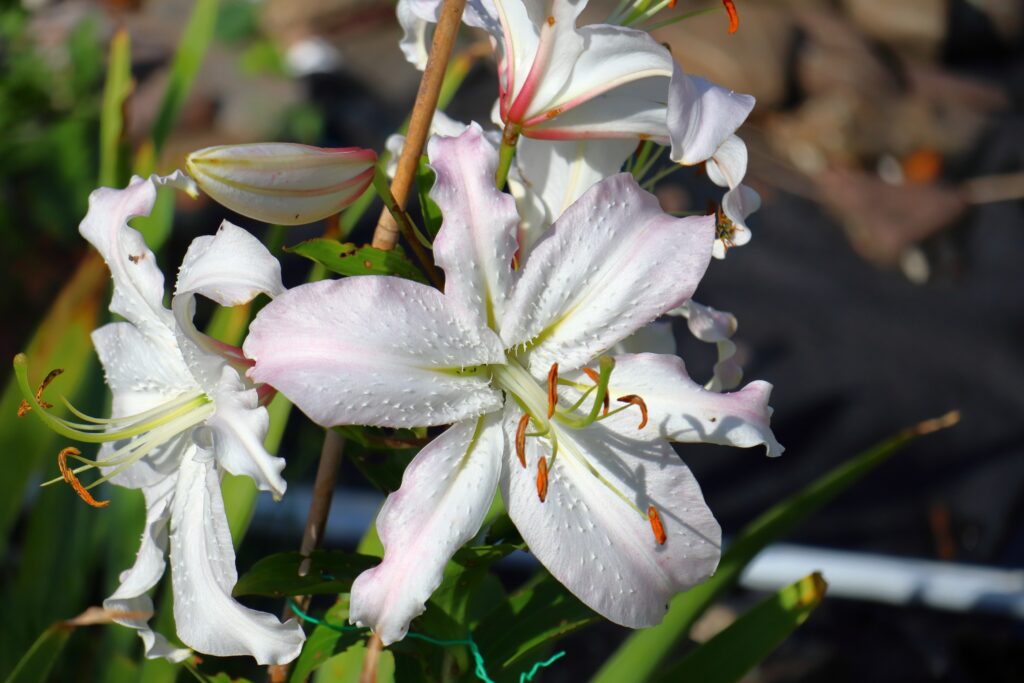
Japanese Lily
The Japanese Lily, scientifically known as Lilium speciosum, is a popular type of lily that originates from Japan and southern China. This flower produces beautiful blooms in late summer, ranging from white to pink and with petals that curve gracefully. The flowers can grow as wide as 6 inches in diameter and reach a height of 5 to 6 feet when properly cared for. To ensure optimal growth, plant the Japanese Lily in well-draining soil and provide it with full to partial shade. Avoid over or under-watering, as dry soil should be avoided. This plant is suitable for USDA Hardiness Zones 5 to 9.
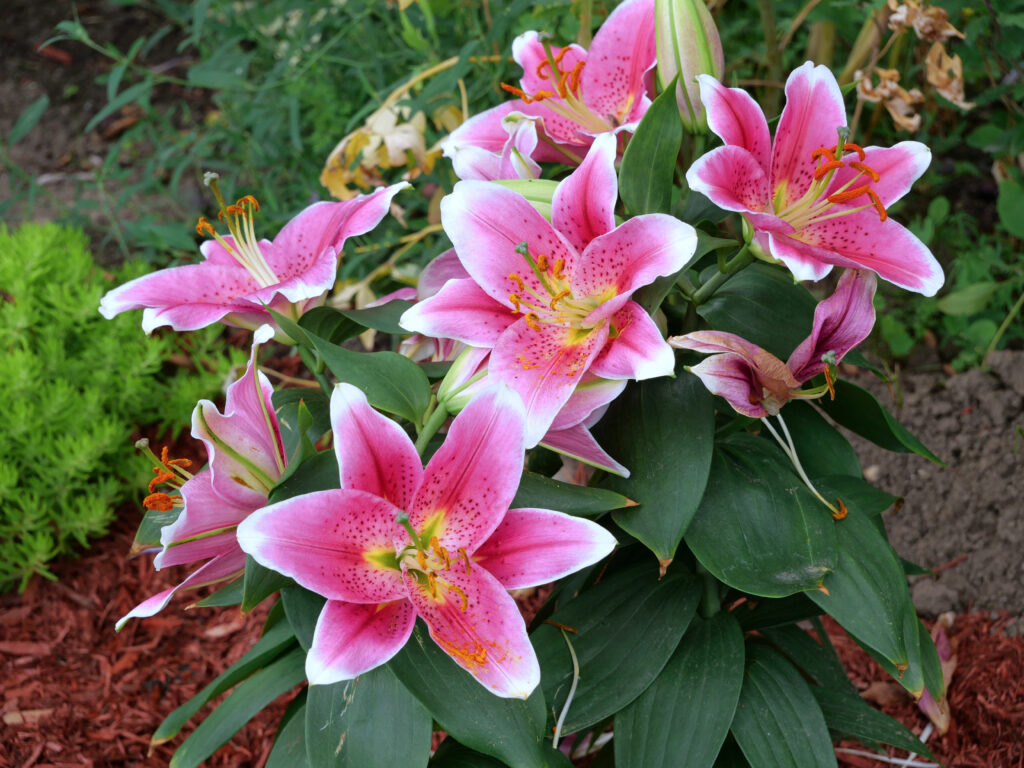
Stargazer Lily
The Stargazer Lily is a hybridized lily with deep pink strips in the center of each petal and a white border. Its show-stopping blooms can grow up to 6 inches wide and bloom in late summer. This lily requires full to partial shade, loamy, well-draining soil, and careful watering to avoid dry soil. The Stargazer Lily is hardy in USDA zones 4 to 9. One notable feature of this lily is its potent aroma, which may overwhelm some. If you’re looking for a statement-making flower for your garden, the Stargazer Lily is a great choice.
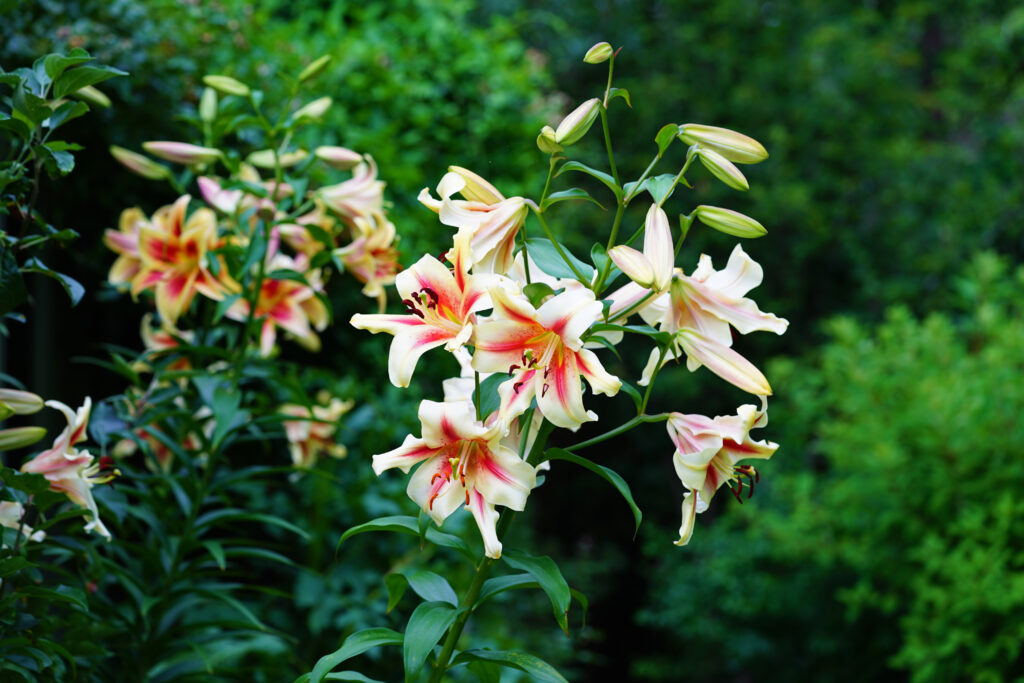
Orienpet Lily
If you’re looking for a robust and fragrant lily that can tolerate higher heat, the Orienpet Lily is an excellent choice. This hybrid lily produces massive flowers that can grow up to 12 inches wide, making it a popular choice for gardeners who want to create a stunning display. Although marketed as “Lily Trees,” Orienpet Lilies are not actually trees but can grow up to 3 to 8 feet tall.
To ensure your Orienpet Lily thrives, plant it in well-draining soil and provide full to partial shade. Avoid over or under-watering as it can handle some dryness but should be avoided. The Orienpet Lily is hardy in USDA Hardiness Zones 4 to 9.
It’s important to note that lilies, including the Orienpet Lily, are toxic to pets, especially cats. If you have an outdoor cat, consider skipping this plant variety to keep your furry friend safe.
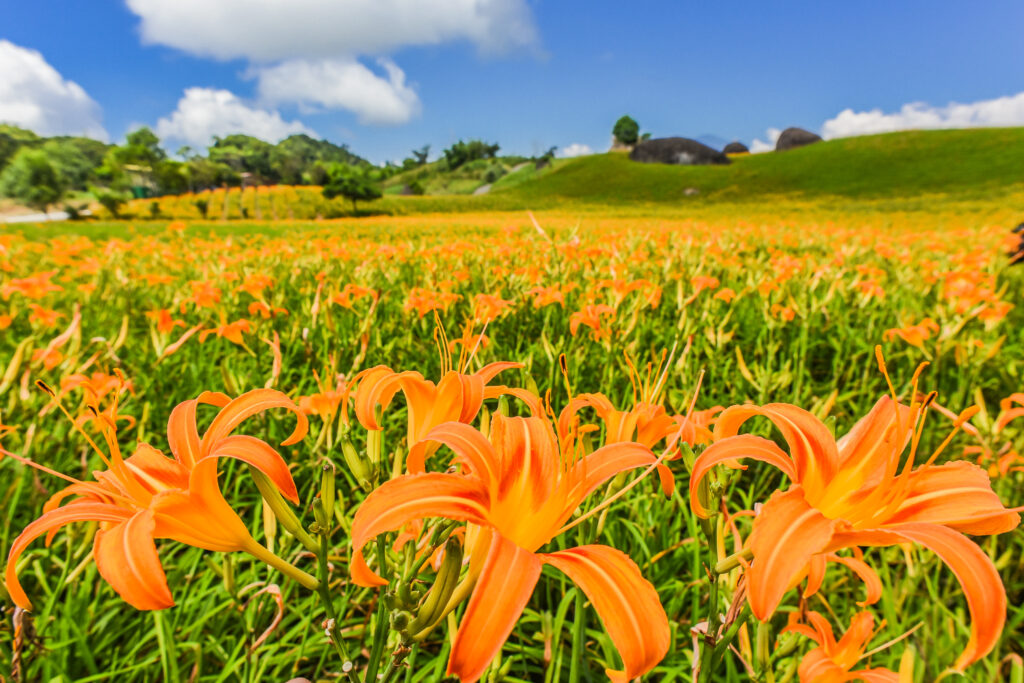
Tiger Lily
If you’re looking for a low-maintenance plant with exotic beauty, look no further than the Tiger Lily. These stunning flowers, native to East Asia, bloom in mid to late summer and feature spotted orange petals that resemble a tiger’s coat. To ensure healthy growth, plant your Tiger Lily in well-draining soil, and avoid over- or under-watering. These flowers prefer full to partial shade and are hardy in USDA zones 3 to 9. With a little bit of care, you can enjoy the beauty of Tiger Lilies in your garden for years to come.
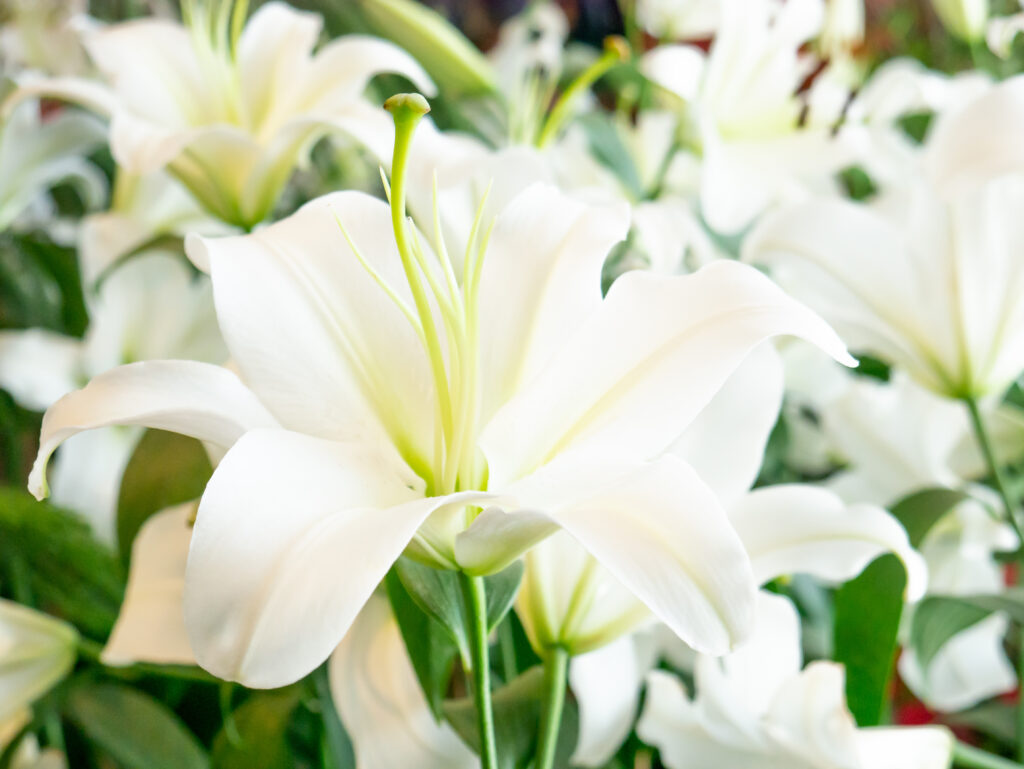
Easter Lily
If you’re looking to add a touch of elegance to your spring garden or home, the Easter lily is a great choice. This iconic, white lily is a popular sight in stores around springtime and can be grown in greenhouses and gardens alike. Originally from the coast of southern Japan, Easter lilies require mild climates, such as the Pacific Northwest, but can be grown in other regions of the country with proper care.
To ensure your Easter lily thrives, here are some important care tips:
- Sun: Provide full to partial shade and avoid direct afternoon sun, which can damage the blooms.
- Water: Consistently moist soil is essential, so avoid over- or under-watering.
- Soil: Well-draining soil, ideally sandy, is best for Easter lilies, but garden soil can also work.
- USDA Hardiness Zones: Easter lilies are best suited for zones 5 to 8.
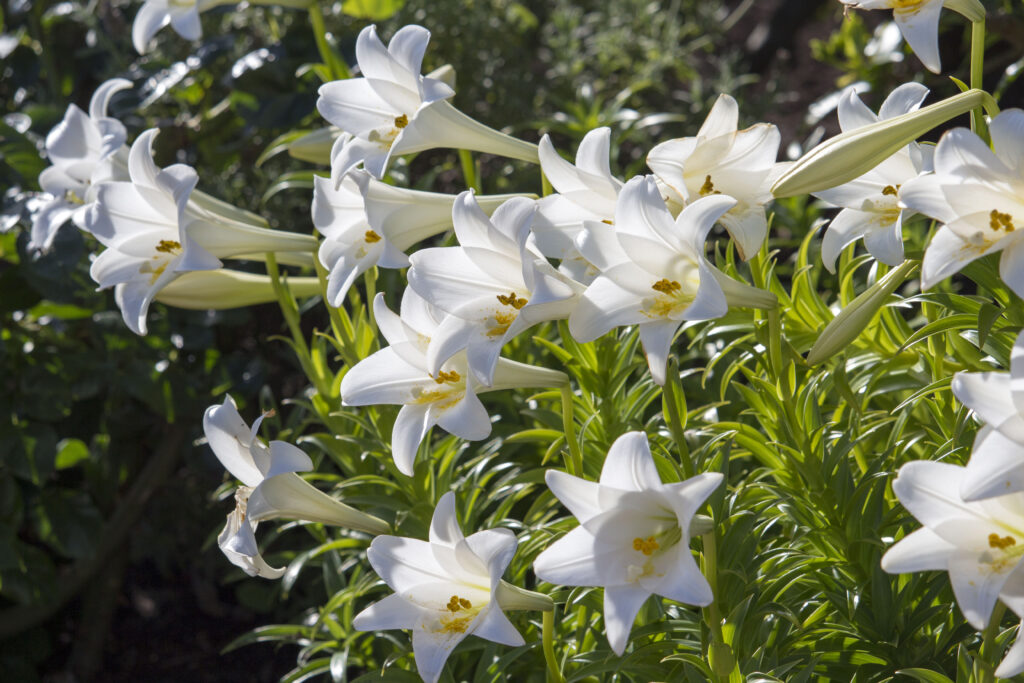
Madonna Lily
The Madonna lily is a trumpet-like lily that blooms in late spring to early summer. This early bloomer can produce up to 20 blossoms per stem. To grow this plant, you should provide full to partial shade and well-draining soil. Avoid over- or under-watering the plant, and make sure to keep the soil moist. The Madonna lily can grow in USDA Hardiness Zones 6 to 9.

LA Lilies
LA Lilies, also known as longiflorum asiaticum, are a hybridized lily that blooms in early to mid-summer. Despite their name, they are not native to Los Angeles. These lilies have larger flowers but do not emit much fragrance, making them perfect for those who are sensitive to smells. They also have a longer vase life when cut. To grow LA Lilies, plant them in well-draining soil in full to partial shade. Avoid over or under-watering and keep the soil consistently moist. These lilies can grow in USDA Hardiness Zones 3 to 9.


